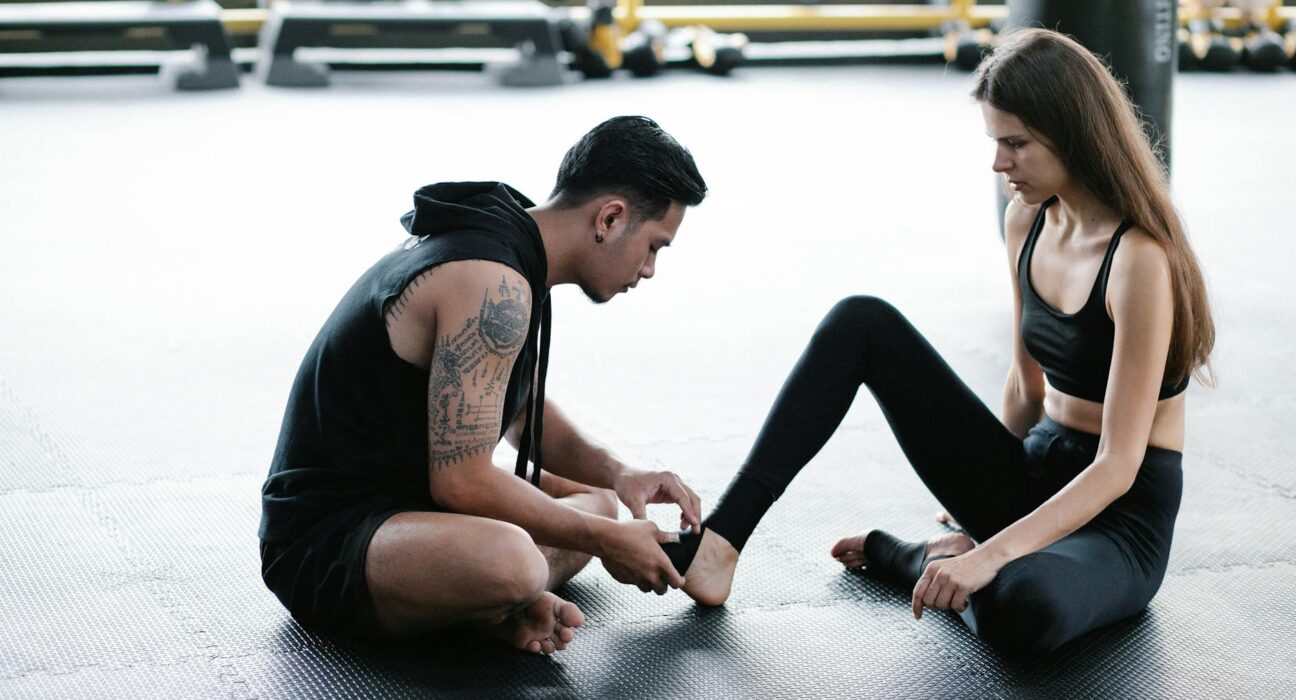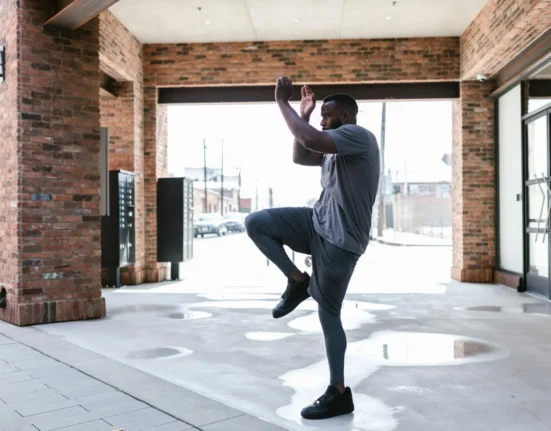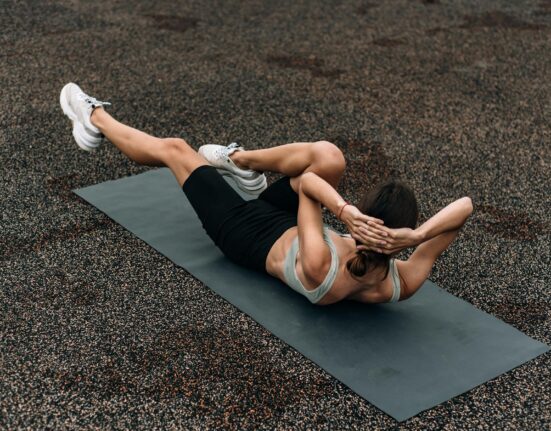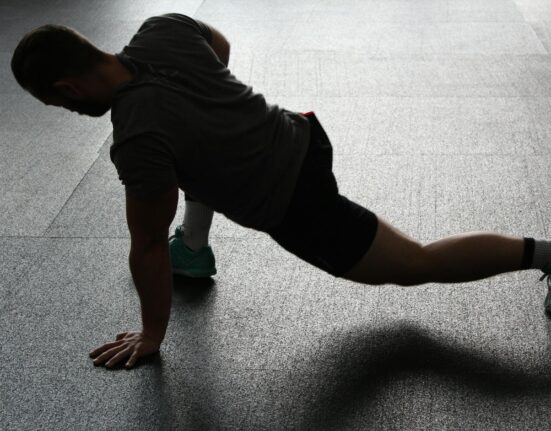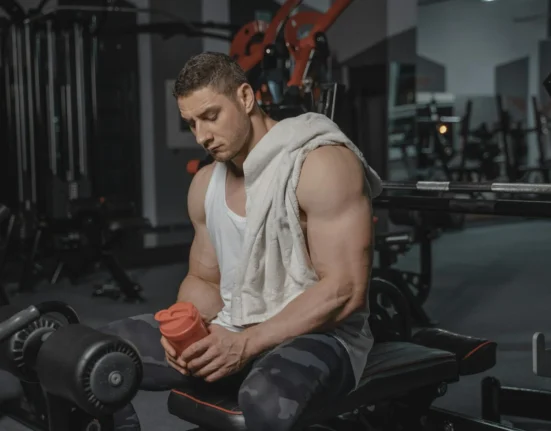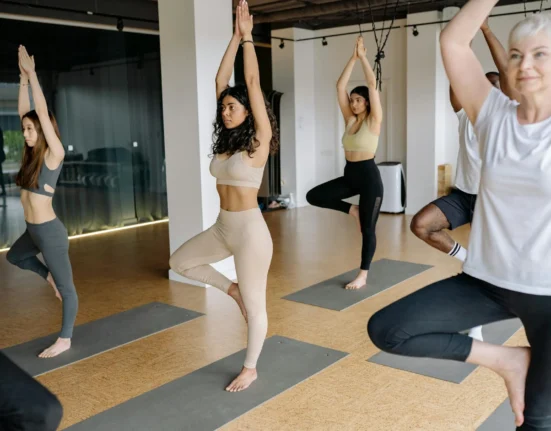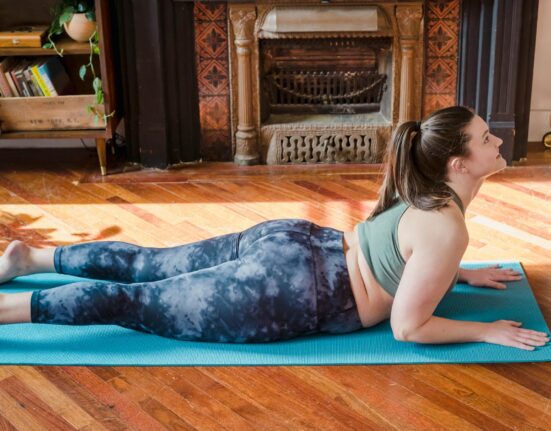Anyone who’s pulled a muscle during a workout knows how quickly a good sweat session can turn sour. That sharp twinge, the sudden sting, and the frustrated walk home are all too familiar to anyone chasing a healthy lifestyle. Injury doesn’t just hurt your body, it zaps your motivation, too.
Staying safe means more than just avoiding a few bad days. Protecting yourself from common workout injuries helps you keep moving, stay on track with your fitness goals, and actually enjoy being active. By building better habits now, you set yourself up for long-lasting health and way more fun at the gym, on the trail, or wherever you like to get moving.
Understand the Common Causes of Workout Injuries
Even the most determined athletes can wind up sidelined by something as simple as tying their shoes wrong or skipping a warm-up. Injuries catch us off guard, but most don’t happen by chance. When you know the usual suspects, you can keep those aches, strains, and pulled muscles at bay.
Poor Technique
Using the wrong form is like building a house on sand. Each rep done with poor technique chips away at your body’s foundation. Common mistakes include:
- Squatting with your back rounded
- Letting knees cave inward during lunges
- Swinging weights instead of lifting with control
- Twisting while lifting heavy objects
Tiny errors add up over time and can lead to major setbacks like strains, sprains, or worse. Learning from a coach or watching form videos can make all the difference.
Overuse and Doing Too Much, Too Soon
Our bodies need time to get stronger. Pushing limits without letting your muscles rest is a one-way ticket to trouble. Typical overuse injuries include shin splints, tendinitis, sore joints, and even stress fractures.
Think of your body as a car—if you floor it every single day, you’ll wear it out much faster. It’s tempting to chase quick gains, but smarter training means listening when your body whispers, not waiting for it to scream.
Skipping Warm-Ups
Jumping straight into high gear without warming up is like trying to run a marathon without tying your shoes. Warm-ups gently wake up your muscles and joints, making them ready for action. Skipping them leaves your muscles cold and stiff, turning simple movements into risky business.
A good warm-up increases blood flow, gets your heart pumping, and gets your head in the right zone. Five minutes of dynamic stretching or light cardio can help prevent a whole world of pain.
Using the Wrong Gear
Shoes that have seen better days, weights that are too heavy, or gear that just doesn’t fit – these things put you at risk. The wrong equipment forces your body to move in unnatural ways, chipping away at form and safety.
- Worn-out running shoes can lead to knee or hip pain.
- Gloves that don’t fit make you grip awkwardly, risking wrist strain.
- Using a barbell that’s too heavy or light throws off balance and control.
Invest in the right gear for your activities and check it often for wear and tear.
Ignoring Your Body’s Signals
Pain is your body waving a red flag. If you feel sharp pain, aching, or swelling, that’s your sign to stop. Ignoring warning signals can turn a minor tweak into a major injury. Tuning in and responding early keeps your body in the game for the long haul.
By spotting these patterns and taking simple steps, you stack the odds in your favor for safe, consistent progress. Small changes in how you move, recover, and gear up can help you sidestep some of the most common exercise injuries.
Proper Warm-Up and Cool-Down: Non-Negotiables for Safety
We all want to jump straight into action and see results. But if you want to move better, hurt less, and keep showing up, don’t skip your warm-up or cool-down. These bookends protect your muscles, joints, and tendons from the jolt of exercise. Like switching gears in a car, a solid warm-up and gentle cool-down help your body handle what’s coming and recover from what you’ve done. No matter your goal or fitness level, these steps aren’t just extra—they’re absolute essentials.
Dynamic Stretching Before Exercise: How It Primes Muscles and Reduces Risk

Photo by Burak Esen
Dynamic stretching is like a wake-up call for your whole body. Instead of holding still in one position, you move through your range of motion. Think of moves like arm circles, leg swings, high-knees, or walking lunges. These stretches make blood flow faster and gently increase your body temperature.
Here’s what makes dynamic stretching so important:
- Boosts blood flow to working muscles, heating them up so they bend and stretch better.
- Readies your nervous system for fast reactions and stronger effort.
- Rehearses movement patterns you’ll use, increasing mind-body connection.
- Lowers injury risk by loosening up tight spots before you push harder.
A good dynamic warm-up takes about 5 to 10 minutes. Keep it simple if you’re new, or ramp up the complexity as you gain confidence. Try this quick beginner routine:
- Arm circles [30 seconds each way]
- Hip circles [30 seconds each way]
- High knees [30 seconds]
- Walking lunges [10 total steps]
- Leg swings [10 times per leg, forward and sideways]
By the end, you’ll feel warm, loose, and ready for anything.
Static Stretching and Breathing Post-Exercise: Protects Muscles and Supports Recovery
When your workout winds down, your body needs a signal to relax. That’s where static stretching comes in. Instead of moving through positions, you hold a gentle stretch for 20 to 30 seconds. This helps your muscles release tension, ease tightness, and start the recovery process.
Couple your stretches with deep, steady breathing. Slow inhales and longer exhales calm your heart rate and help whisk away waste products like lactic acid. This two-part combo gives your muscles the rest they crave and your mind the wind-down it needs.
Here’s a basic post-workout routine for anyone:
- Hamstring stretch (sit or stand, reach for your toes)
- Quad stretch (stand and pull your heel toward your glute)
- Chest stretch (clasp hands behind your back and open your chest)
- Upper back stretch (hug yourself, pulling your shoulders forward)
- Calf stretch (push against a wall and press your heel down)
Tips for a safe cool-down:
- Never bounce during static stretches. Move smooth and gentle.
- Breathe deeply and let your muscles relax with each breath.
- Hold each stretch for at least 20 seconds, longer if you feel tight.
Taking a few focused minutes after your workout helps your body bounce back faster, keeps you flexible, and chips away at stiffness before it starts. It’s the reset button every body needs.
Technique and Form Always Come First
Proper form is where safety starts and progress truly builds. Think of it like laying down tracks before a train can run. No matter your fitness level, rushing through movements or copying what others do can pile extra stress onto your joints, muscles, and bones. Every exercise, from squats to pushups to boxing, works best when you slow down and get the basics right. Make technique your foundation.
Learn Moves Under Supervision

Photo by Ketut Subiyanto
Learning how to move well is easier (and safer) when someone has your back. If you’re new, a personal trainer or group coach can spot mistakes you won’t feel right away. Even veterans touch base with a trainer sometimes to tighten up their form.
Don’t have access to a coach? Use video tutorials from reliable sources or the gym’s mirrors to check yourself. Mirrors let you compare what you’re doing to what you think you’re doing. You might notice your knees drifting in, your shoulders tensed up, or your spine rounding when it shouldn’t.
Start slow, always. No one earns a badge for lifting more than they can handle or speeding through with sloppy technique. Focus on these tips when learning moves:
- Master bodyweight basics before adding weight.
- Break down big lifts into smaller steps if needed.
- Record yourself to check for mistakes.
- Choose lighter weights until your movements feel natural and steady.
Practice doesn’t make perfect—perfect practice makes progress and keeps you in the game.
Listen to Your Body’s Warnings
Your body almost always whispers before it yells. Sharp pain, joint pinching, or constant fatigue are not badges of effort—they’re warning bells. With good form, muscles may burn or feel tired, but pain or odd twinges should never be ignored.
Look for these signs you might be losing form or heading for trouble:
- Sudden or sharp pain during a rep
- A “pop,” “snap,” or odd shift inside a joint
- Numbing or tingling in hands or feet
- Swelling or bruising right after exercise
- Needing to “cheat” on every rep just to finish
Stop and reset if you notice these signs. Shaky form means your muscles are too tired or you’ve picked too much weight. Always give yourself permission to step back, take a break, or lighten up on the next set.
Good technique lets you control each move with power and confidence. Trust your body’s signals, not your ego. That’s how you’ll stay strong, mobile, and injury-free mile after mile.
Don’t Skip Rest and Recovery
Even the hardest workers in the gym need to hit pause. If you’re chasing healthy progress and want to dodge the most common workout injuries, you can’t overlook rest and recovery. Think of downtime as the glue that keeps your training days sticking together. It’s just as important as perfect squats or smart warm-ups. A strong recovery routine restores energy, repairs muscle, and protects your body from unnecessary strain. Skipping it? That’s like trying to build a house with no blueprint—sooner or later, something’s going to crack.
Sleep’s Role in Healing and Strength: Simple advice on sleep routines that protect against injury

Photo by Tim Samuel
Your muscles don’t rebuild while you’re pushing through one more pushup. The magic really happens when you’re under the covers, deep in sleep. Quality rest is the body’s own repair mechanic, fixing tiny tears in muscle and replenishing the systems that keep you moving.
Here’s how to make sleep work for you:
- Aim for 7 to 9 hours every night. Less than that and you’re running on fumes.
- Stick to a set bedtime. Your body loves routine. Try to wind down at the same time each night.
- Turn screens off 30 minutes before bed. Blue light from phones and TVs makes it harder to get deep, restful sleep.
- Create a calm sleep space. A cool, dark room helps your body fall asleep faster.
- Skip caffeine in the afternoon. It hangs around in your system and can mess with your sleep cycle.
When you skimp on sleep, your coordination, balance, and reaction time dip. That puts you at higher risk for pulled muscles, rolled ankles, and nagging aches that don’t quite heal. Protect your time under the sheets like you would your favorite running shoes.
Smart Scheduling: Balancing Workouts and Downtime
It’s easy to overbook your week with training goals and forget that recovery deserves a spot on your calendar, too. Your muscles need a break to rebuild and grow stronger. Rest days aren’t just empty spaces—they’re the secret weapon that keeps you on the move.
Try these tips to balance workouts and recovery:
- Mark your rest days. Treat them like appointments you can’t miss. Write them in your calendar or set reminders.
- Plan active recovery. Light activities like walking, easy yoga, or gentle cycling boost circulation and help muscles mend without added stress.
- Rotate muscle groups. If you train legs one day, focus on arms or core the next. This gives tired muscles some breathing room.
- Watch for signs of burnout. Persistent soreness, irritability, and trouble sleeping mean you need extra rest.
- Mix up the intensity. Not every session needs to be at full throttle. Add in low-impact workouts between tougher ones.
A balanced schedule with planned downtime isn’t lazy—it’s a practical, proven way to avoid injury and keep your workouts working for you. Structure your week so you’re not just chasing sweat, but building up the reserves that keep you healthy for the long haul.
Choose the Right Equipment and Environment
Choosing your gear and workout spot isn’t just about looking cool or finding motivation. Every choice, from shoes to workout space, builds the safety net that keeps you active and injury-free. Let’s break down how your equipment and environment shape your workouts.
The Impact of Proper Footwear: Highlight why the right shoes matter for joint and muscle safety
The shoes you wear do more than match your gym outfit. They act as the foundation for every step, jump, or lift. The wrong pair can set off a chain reaction of trouble, working its way up from your feet to your ankles, knees, hips, and even your lower back.
Investing in the right shoe for your activity is like putting shock absorbers on your body. Here’s what to keep in mind:
- Cushioning saves your joints. Good shoes absorb impact, protecting knees, hips, and spine from the pounding of running, jumping, or hard landings.
- Support keeps you steady. The right fit stops your ankle from rolling and keeps your arches working as they should.
- Traction stops slips. Grippy soles prevent falls in a sweaty gym or on slick outdoor paths.
- Reinforcement protects toes and heels. Activities like basketball or HIIT need sturdy shoes to stop bruises or crush injuries.
Signs you need new shoes:
- Worn-out soles or uneven wear
- Holes or fraying fabric
- Reduced cushioning (feels “flat” underfoot)
- Pain or discomfort after workouts
Rotating shoes for different activities also helps. For example, running shoes won’t work well for heavy lifting, and court shoes won’t cut it for trail running. Match the shoe to the movement whenever you can. Your future knees will thank you.
Safety at the Gym, Home, and Outdoors: Describe hazards unique to each location and how to reduce risks
Where you work out changes the risks you face. Each spot needs its own safety check. Let’s walk through the most common places you’ll find yourself moving and see what to look out for.
Gym Safety

Photo by cottonbro studio
Gyms are packed with equipment, people, and distractions. Here’s how to stay safe:
- Check machines and weights before using them. Make sure cables aren’t frayed, pins are secure, and benches don’t wobble.
- Wipe sweat off handles and mats to avoid slips.
- Don’t leave weights or equipment in walkways.
- Use safety clips on bars and spotters on heavy lifts.
- Listen for gym alerts or changes in rules.
Home Workout Safety
Your living room might seem safe, but it hides its own dangers:
- Clear your space. Move furniture, toys, and loose rugs to avoid tripping.
- Use a non-slip mat for bodyweight or yoga sessions.
- Store equipment after each workout to prevent stubbed toes or falls.
- Watch out for pets wandering through your workout zone.
Outdoor Workout Safety
Nature offers fresh air and wide spaces, but unpredictable hazards too:
- Check the ground for holes, loose gravel, wet leaves, or roots.
- Choose shoes with proper tread for your terrain.
- Avoid busy roads or isolated paths, especially at night. Wear bright clothing and reflectors if needed.
- Have weather-appropriate gear ready, including sun protection or waterproof layers.
- Scan for insects, animals, or slippery surfaces after rain.
Each workout spot comes with its own rules for safe movement. With a little prep, you can train anywhere with peace of mind, knowing you’re looking out for your body and your progress.
Conclusion
Safe movement is always worth the small extra steps. By listening to your body, paying attention to technique, and keeping rest part of your routine, you put up a real shield against common injuries. Good shoes, smart equipment choices, and a clear workout space give your body the support it deserves.
If you build these habits now, you turn exercise from a risk into a lifelong reward. Every stretch, every pause, and every careful rep helps you come back day after day, stronger and more confident. Start putting safety first this week and see how much further your fitness can take you.
Thank you for reading—your commitment to moving smart will pay off every time you lace up your shoes. Share your own tips or injury stories below, and help others stay strong on their fitness journey.


